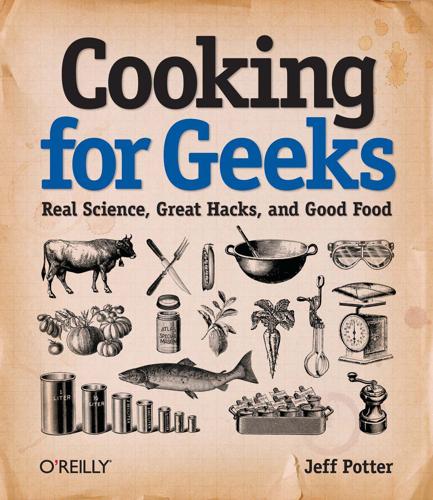
Cooking for Geeks
by
Jeff Potter
Published 2 Aug 2010
., Sugar guar gum, E Numbers: The Dewey Decimal System of Food Additives gustatory sense (see ) Gustavson, Carl, Others H HAACP, How to Prevent Foodborne Illness Caused by Bacteria hacker thinking defined, Think Like a Hacker Duncker’s Candle Problem, Functional Fixedness functional fixedness and, Functional Fixedness, Tips for Newbies in kitchen, Think Like a Hacker learning how to cook and, Tips for Newbies mental restructuring, Functional Fixedness hands as kitchen tool, Unitaskers as thermometers, Thermometers and timers hazelnuts, Taste (Gustatory Sense) healthy (cooking style), Functional Fixedness, Know your type heat gradient, Heat Transfer and Doneness heat shields, Convection heat transfer carryover and, Temperature gradients combinations of methods, Radiation conduction, Methods of Heat Transfer convection, Methods of Heat Transfer, Combinations of heat cooking methods plotted by, Combinations of heat doneness and, Heat Transfer and Doneness experimenting with sources, Combinations of heat methods of, Methods of Heat Transfer oil and water, Convection radiation, Methods of Heat Transfer, Convection sous vide cooking and, Sous Vide Cooking temperature gradients, Heat Transfer and Doneness time/temperature rule of thumb, Heat Transfer and Doneness Hell’s Kitchen (TV show), Don’t be afraid to burn dinner!
…
self-test, Know your type cook-chill cooking, Foodborne Illness and Sous Vide Cooking cook-hold cooking, Foodborne Illness and Sous Vide Cooking cookies caramelization and, 356°F / 180°C: Sugar Begins to Caramelize Visibly Chocolate Chip Cookies, Baking Soda Gingerbread Cookies, Baking Soda Meringue Cookies, Meringues Spice Cookies, Reading Between the Lines cooking foods defined, Time and Temperature: Cooking’s Primary Variables for one person, Cooking for One for others, Cooking for One heat shields, Convection history of, Reading Between the Lines learning how to cook, Tips for Newbies, Taste == Feedback, Reading Between the Lines matching food properties with methods, Heat Transfer and Doneness most important variable in, Cooked = Time * Temperature reasons for, Functional Fixedness stages in, Functional Fixedness, Have fun! stirring food while, Reading Between the Lines tasting food during, Tips for Newbies Cooking Issues blog, Commercial Hardware and Techniques, Stock, broth, and consommé cooking styles conflict and, Functional Fixedness self-test, Know your type Wansink on, Functional Fixedness Cooking: A Quintessential Art (This), Sugar Cook’s Illustrated, Prepping Ingredients, Kitchen Pruning copper bowls, Analytical Method, Egg Whites coq au vin, Seasonal Method cornstarch as food additive, Playing with Chemicals making gels, Making gels: Starches corporate overlording, Seasonal Method cosolvency, Smell (Olfactory Sense) covalent bonds, Meat Glue: Transglutaminase Crace, John, Modern Industrial Chemicals The Craftsman (Sennett), 356°F / 180°C: Sugar Begins to Caramelize Visibly cream of tartar, Baking Powder cream whippers, Whipped Cream, Sous Vide Cooking, Cream Whippers (a.k.a.
…
"iSi Whippers") Almond Flan, Seasonal Method Apple Pie, Making ice cream Beurre Noisette Ice Cream, 356°F / 180°C: Sugar Begins to Caramelize Visibly Black Cherry Compote, Seasonal Method Brownies in an Orange, Sous Vide Cooking Caramel Sauce, 356°F / 180°C: Sugar Begins to Caramelize Visibly Chocolate Almond Bars, Chocolate Chocolate Mousse, Whipped Cream Chocolate Panna Cotta, Making gels: Agar Cocoa-Goldschläger Ice Cream, Making dusts Crepes, Unitaskers French Meringue, Meringues Italian Meringue, Meringues Lemon Meringue Pie, Making gels: Starches Pear Sorbet, Smell (Olfactory Sense) Pie Dough, Gluten Poached Pears in Red Wine, 158°F / 70°C: Vegetable Starches Break Down Quinn’s Crème Brûlée, Blowtorches for crème brûlée Scones, Baking Powder Strawberry or Raspberry Soufflé, Egg Yolks S’mores Ice Cream, Liquid Smoke: Distilled Smoke Vapor Tiramisu, Whipped Cream Zabaglione, Egg Yolks dewar, defined, Dangers of liquid nitrogen Dexter-Russell, Kitchen Equipment, Knives dextrose, Yeast in breads diacetyl, Smell (Olfactory Sense) dietary restrictions, Cooking for One, Cooking Around Allergies differential scanning calorimetry (DSC), Chocolate dishwasher, cooking in, Sous Vide Hardware distilling process, Stock, broth, and consommé 2,4-dithiapentane, Smell (Olfactory Sense) divalent cation, Making gels: Sodium alginate DNA fingerprints, How to Prevent Foodborne Illness Caused by Parasites dolce de leche, 356°F / 180°C: Sugar Begins to Caramelize Visibly Domino Sugar, Anti-Sugar: Lactisole doneness heat transfer and, Heat Transfer and Doneness temperatures required for, 104°F / 40°C and 122°F / 50°C: Proteins in Fish and Meat Begin to Denature testing for, Time and Temperature: Cooking’s Primary Variables dorso-lateral prefrontal cortex, Combinations of Tastes and Smells Dravnieks, Andrew, Analytical Method drinks (see ) Drip-Filtered Consommé, Stock, broth, and consommé dry aging meats, 104°F / 40°C and 122°F / 50°C: Proteins in Fish and Meat Begin to Denature dry brining, Traditional Cooking Chemicals, Dry brining dry heat methods, Methods of Heat Transfer dry ice, "cooking" with, Making ice cream DSC (differential scanning calorimetry), Chocolate Duck Confit, 154°F / 68°C: Collagen (Type I) Denatures Duck Confit Sugo, Reading Between the Lines Dufresne, Wylie, Modern Industrial Chemicals Duncker, Karl, Functional Fixedness Duncker’s Candle Problem, Functional Fixedness DuPont, Salty Dwight, John, Playing with Chemicals E E numbers classification, E Numbers: The Dewey Decimal System of Food Additives E. coli, Cutting boards, Foodborne Illness and Staying Safe, How to Prevent Foodborne Illness Caused by Parasites Early French Cookery (Scully), Regional/Traditional Method Eat Tweet (Evans), Reading Between the Lines eating habits changing, Functional Fixedness physiological reasons, A Few Words on Nutrition Edman, Lenore, Making ice cream egg whites about, 144°F / 62°C: Eggs Begin to Set as mechanical leaveners, Mechanical Leaveners beating, Analytical Method, 144°F / 62°C: Eggs Begin to Set copper bowls and, Analytical Method, Egg Whites denaturing, Time and Temperature: Cooking’s Primary Variables Maillard reactions and, 310°F / 154°C: Maillard Reactions Become Noticeable meringues, Meringues salt roasting and, Wet brining egg yolks, Egg Yolks eggs 30-Minute Scrambled Eggs, 144°F / 62°C: Eggs Begin to Set 60-Minute Slow-Cooked Egg, Pasteurized Eggs allergies to, Ingredients to avoid cooking, Cooking for Others, 144°F / 62°C: Eggs Begin to Set, Stock, broth, and consommé cracking, Picking a Recipe Foamed Scrambled Eggs, Cream Whippers (a.k.a.

The Eureka Factor
by
John Kounios
Published 14 Apr 2015
What makes this simple problem so difficult for most people is that, after years of experience thinking about pliers as having one particular function, it’s difficult to think of them as having a different function. This “functional fixedness” is similar to the difficulty of the Nine-Dot Problem: People assume that there are rules, boundaries, or restrictions where there aren’t any. It’s what the firefighters on Wag Dodge’s team experienced when they couldn’t think of fire as anything other than a threat to be eliminated or avoided. Only Dodge was able to overcome functional fixedness and realize that fire was also a tool that would enable him to solve the problem and save his life. In such cases, the trick is to be open to alternative, nonobvious interpretations.
…
In such cases, the trick is to be open to alternative, nonobvious interpretations. This is how he broke out of his box. Functional fixedness imprisons thought just when it needs to be liberated. And, worse, it doesn’t take a lifetime of experience with fire or tools for this to happen. In 1951, psychologists Herbert Birch and Herbert Rabinowitz expanded on Maier’s two-string study by first providing different experiences to their participants. Some were told to install a switch into an electrical circuit board. Others were told to install another type of electrical component called a relay into a circuit board.
…
All these things are expected and are therefore not problems to solve. Furthermore, imagine how taxing it would be to always consider all the possible uses for all the familiar objects with which you interact. Should I use my hammer or my telephone to pound in that nail? Could the oven dry my clothes just as well as that clothes dryer? On a daily basis, functional fixedness is a relief, not a curse. That’s why you shouldn’t even attempt to consider all your options and possibilities. You can’t. If you tried to, then you’d never get anything done. So don’t knock the box. Ironically, although it limits your thinking, it also makes you smart. It helps you to stay one step ahead of reality.

Think Like a Rocket Scientist: Simple Strategies You Can Use to Make Giant Leaps in Work and Life
by
Ozan Varol
Published 13 Apr 2020
The barometer story is a good example of functional fixedness. As psychologist Karl Duncker explains, the concept refers to a “mental block against using an object in a new way that is required to solve a problem.” Just as we treat problems and questions as fixed, we do the same with tools. Once we learn that a barometer measures pressure, we blind ourselves to other uses for it. Like the chess players whose eyes kept darting to the familiar solution on the chess board, our minds fixate on the function we know. Perhaps the most famous example of functional fixedness is the candle problem, designed by Duncker.
…
The first group saw boxes being used as containers and, as a result, suffered from acute functional fixedness. They had a much harder time using the box for anything other than storing objects. But for the second group, the objects were sitting on the table next to—not inside—the boxes, which were empty. With the objects out of the boxes, the participants could more easily see the boxes as potential stands for the candle. The results were similar to the conclusion of the study involving chess experts. In both cases, performance improved when the familiar solution was removed. Functional fixedness arises from a set of assumptions we have about what a box or a barometer is supposed to do.
…
Functional fixedness arises from a set of assumptions we have about what a box or a barometer is supposed to do. We can reduce functional fixedness by taking out Occam’s razor—which we explored earlier in the book—and cutting our assumptions about the tool. If you didn’t know what you know, what else could you do with it? This can be as simple as blocking its obvious use—dumping the materials out of the box (as Adamson’s study did), removing the familiar solution from the chess board, or using the barometer for anything other than measuring pressure. Combinatory play also helps. You can draw inspiration from how objects are used in other fields. For example, the airbags that landed my group’s rovers safely on Mars used the same mechanism that cushions a collision with your steering wheel in a car accident.

Drive: The Surprising Truth About What Motivates Us
by
Daniel H. Pink
Published 1 Jan 2008
But that doesn't work. Some light a match, melt the side of the candle, and try to adhere it to the wall. That doesn't work either. But after five or ten minutes, most people stumble onto the solution, which you can see below. The candle problem solved. The key is to overcome what's called functional fixedness. You look at the box and see only one function as a container for the tacks. But by thinking afresh, you eventually see that the box can have another function as a platform for the candle. To reprise language from the previous chapter, the solution isn't algorithmic (following a set path) but heuristic (breaking from the path to discover a novel strategy).
…
Dan Ariely, Uri Gneezy, George Lowenstein, and Nina Mazar, Large Stakes and Big Mistakes, Federal Reserve Bank of Boston Working Paper No. 05-11 , July 23, 2005 (emphasis added). You can also find a very short summary of this and some other research in Dan Ariely, What's the Value of a Big Bonus? New York Times , November 20, 2008. LSE: When Performance-Related Pay Backfires, Financial , June 25, 2009. Sam Glucksberg, The Influence of Strength of Drive on Functional Fixedness and Perceptual Recognition, Journal of Experimental Psychology 63 (1962): 36-41. Glucksberg obtained similar results in his Problem Solving: Response Competition Under the Influence of Drive, Psychological Reports 15 (1964). Teresa M. Amabile, Elise Phillips, and Mary Ann Collins, Person and Environment in Talent Development: The Case of Creativity, in Talent Development: Proceedings from the 1993 Henry B. and Jocelyn Wallace National Research Symposium on Talent Development , edited by Nicholas Colangelo, Susan G.

The Achievement Habit: Stop Wishing, Start Doing, and Take Command of Your Life
by
Bernard Roth
Published 6 Jul 2015
For instance, maybe you have to figure out how to create a communication device using a box of Cheerios, a hammer, tape, cotton balls, a hairbrush, and a bag of marbles. Most people have a cognitive bias called functional fixedness that causes them to see objects only in their normal context. The use of the materials and tools in their ordinary way will generally lead to no workable solutions or, at the very most, mundane ones. The really exciting solutions come from overcoming functional fixedness and using these everyday items in new ways. To see the possibilities it is helpful to take the viewpoint that nothing is what you think it is. You need to make the familiar unfamiliar.
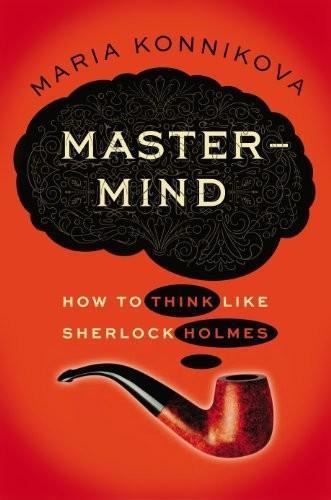
Mastermind: How to Think Like Sherlock Holmes
by
Maria Konnikova
Published 3 Jan 2013
They take the hot System Watson route—action, action, action—underestimating the crucial need for the exact opposite: a moment of quiet reflection. And so they understandably go at once for the most natural or most obvious solutions. The majority of people in this situation do not see that something obvious—a box of tacks—might actually be something less obvious: a box and tacks. This is known as functional fixedness. We tend to see objects the way they are presented, as serving a specific function that is already assigned. The box and tacks go together as a box of tacks. The box holds the tacks; it does not have another function. To go past that and actually break the object into two component parts, to realize that the box and matches are two different things, takes an imaginative leap (Duncker, coming from the Gestalt school, was studying precisely this question, of our tendency to see the whole over the parts).
…
Anders, ref1, ref2, ref3 event-related potentials (ERPs), ref1 exceptions, Holmes’ view, ref1 explicit memory, ref1 eyewitness testimony, ref1 fairy photos, ref1, ref2, ref3, ref4, ref5, ref6, ref7 Falk, Ruma, ref1 Fechner, Gustav Theodor, ref1 Feynman, Richard, ref1, ref2, ref3, ref4 filtering, ref1, ref2, ref3, ref4, ref5, ref6, ref7 foreign language learning, ref1 Fosbury, Dick, ref1 Frederick, Shane, ref1 frontal cortex, ref1 functional fixedness, ref1 Gardner, Edward, ref1 Gazzaniga, Michael, ref1 Gilbert, Daniel, ref1, ref2, ref3, ref4 Gillette, William, ref1 Gollwitzer, Peter, ref1 Great Wyrley, Staffordshire, England, ref1, ref2 “The Greek Interpreter,” ref1 Green, C. Shawn, ref1 Griffiths, Frances, ref1, ref2, ref3 habit, ref1, ref2, ref3, ref4 Haggard, Sir H.
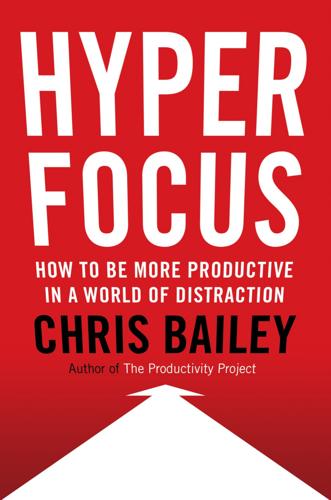
Hyperfocus: How to Be More Productive in a World of Distraction
by
Chris Bailey
Published 31 Jul 2018
When you’re happy, the amount of dopamine in the logical part of your brain rises, which leads you to approach your work with more energy and vigor—and because you have more attentional space to work with, you have the resources you need to focus more deeply and accomplish more. Being in a good mood also makes you better at recalling information on the fly. You also consume information more actively: the happier you are, the more likely you are to put ideas together in new and interesting ways, and the better you’re able to overcome “functional fixedness” and, like MacGyver, see new uses for familiar things. Happiness also encourages you to seek more variety—but not the risky kind. On the other hand, a negative mood shrinks the size of your attentional space. Unhappy people are less productive—full stop. The less happy you are, the more often your mind wanders against your will, and the less attention you bring to what’s in front of you.
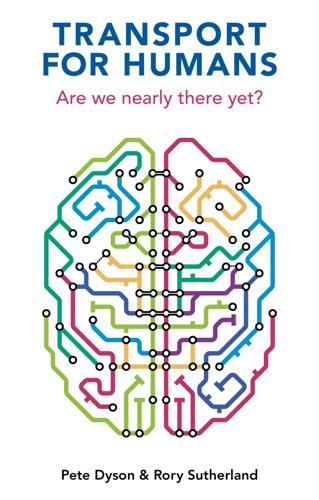
Transport for Humans: Are We Nearly There Yet?
by
Pete Dyson
and
Rory Sutherland
Published 15 Jan 2021
Rumiati. 2003. Rethinking the focusing effect in decision-making. Acta Psychologica 113(1), 67–81. P. Legrenzi, V. Girotto and P. N. Johnson-Laird. 1993. Focussing in reasoning and decision making. Cognition 49(1–2), 37–66. 5 It originates from an immovable state of mind known as functional fixedness. See K. Duncker and L. S. Lees. 1945. On problem-solving. Psychological Monographs 58(5), i–113. 6 H. R. McMaster. 2020. Battlegrounds: The Fight to Defend the Free World. New York: Harper Collins. 7 A. H. Maslow. 1962. Toward a Psychology of Being. New York: Wiley. 8 M.
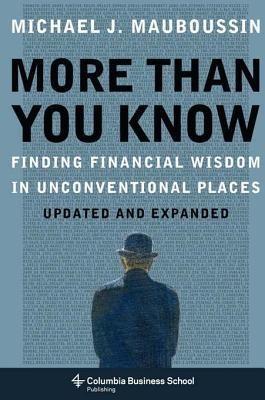
More Than You Know: Finding Financial Wisdom in Unconventional Places (Updated and Expanded)
by
Michael J. Mauboussin
Published 1 Jan 2006
While tens of thousands of hours of deliberate practice allows experts to internalize many of their domain’s features, this practice can also lead to reduced cognitive flexibility. Reduced flexibility leads to deteriorating expert performance as problems go from the simple to the complex. Two concepts are useful here. The first is what psychologists call functional fixedness, the idea that when we use or think about something in a particular way we have great difficulty in thinking about it in new ways. We have a tendency to stick to our established perspective and are very slow to consider alternative perspectives. EXHIBIT 6.1 Edges of the Problem Continuum Discrete Continuous Static Dynamic Sequential Simultaneous Mechanical Organic Separable Interactive Universal Conditional Homogenous Heterogeneous Regular Irregular Linear Nonlinear Superficial Deep Single Multiple Stationary Nonstationary Source: Paul J.
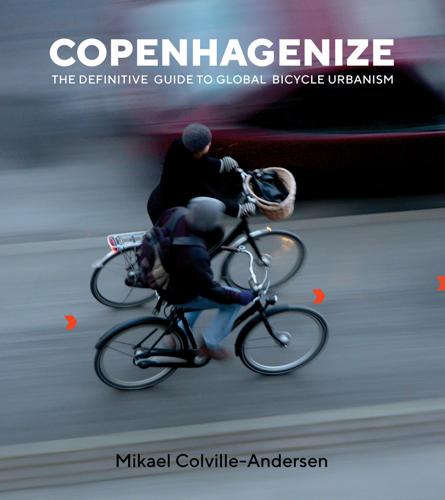
Copenhagenize: The Definitive Guide to Global Bicycle Urbanism
by
Mikael Colville-Andersen
Published 28 Mar 2018
Dick Quax responded with a few tweets claiming that: “no one in the entire Western world uses the train for their shopping trips.” / “the very idea that people lug home their weekly supermarket shopping on the train is fanciful.”/ “…I ride my bike to get my weekly shopping—yeah right.” The rest is history. Welcome to involuntary immortality, Mr. Quax. The Internet responded to your functional fixedness as only the Internet can. Photos started appearing on Twitter and the hashtag soon followed: #quaxing. While the initial discussion was about public transport, it quickly morphed into shopping and transporting goods on foot and by bicycle as well. I know some people who do their weekly shopping by bike, but most—like me—visit the supermarket almost daily.

Beginners: The Joy and Transformative Power of Lifelong Learning
by
Tom Vanderbilt
Published 5 Jan 2021
This tendency for people to default to the familiar, even in the face of a more optimal novel solution, has been termed the Einstellung effect (after a German word that means “set”). In the famous “candle problem,” people are asked to attach a candle to the wall using nothing more than a box of matches and a box of tacks. People struggle to solve it because they get hung up on the “functional fixedness” of the box as a container for tacks, not as a theoretical shelf for the candle. There is one group, it turns out, that tends to do pretty well on the candle problem: five-year-olds. Why? The researchers who found this suggest that younger children have a more fluid “conception of function” than older children or adults.
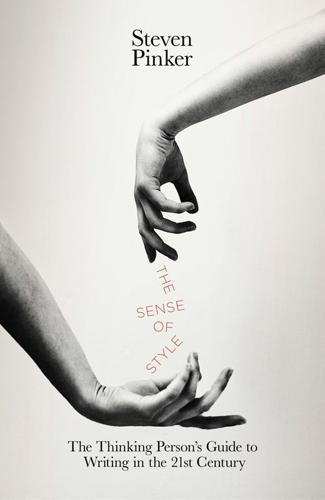
The Sense of Style: The Thinking Person's Guide to Writing in the 21st Century
by
Steven Pinker
Published 1 Jan 2014
I believe the answer lies in another way in which expertise can make our thoughts more idiosyncratic and thus harder to share: as we become familiar with something, we think about it more in terms of the use we put it to and less in terms of what it looks like and what it is made of. This transition, another staple of the cognitive psychology curriculum, is called functional fixity (sometimes functional fixedness).24 In the textbook experiment, people are given a candle, a book of matches, and a box of thumbtacks, and are asked to attach the candle to the wall so that the wax won’t drip onto the floor. The solution is to dump the thumbtacks out of the box, tack the box to the wall, and stick the candle onto the box.
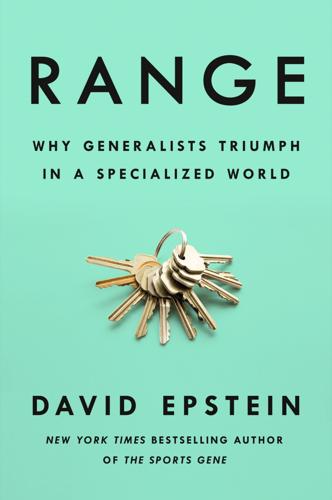
Range: Why Generalists Triumph in a Specialized World
by
David Epstein
Published 1 Mar 2019
(In 2015, Ad Age awarded “Pro Bono Campaign of the Year” to the cheeky lateral thinkers of the “Drop-A-Brick” project, which manufactured rubber bricks for use in California toilets during a drought.) There is, to be sure, no comprehensive theory of creativity. But there is a well-documented tendency people have to consider only familiar uses for objects, an instinct known as functional fixedness. The most famous example is the “candle problem,” in which participants are given a candle, a box of tacks, and a book of matches and told to attach the candle to the wall such that wax doesn’t drip on the table below. Solvers try to melt the candle to the wall or tack it up somehow, neither of which work.

Miracle Cure
by
William Rosen
Published 14 Apr 2017
The really bad news was this: Since a Viennese chemist named Paul Gelmo had identified sulfanilamide as part of his 1908 doctoral thesis and patented it in 1909, the substance was now in the public domain. At Bayer, the news was devastating. No one yet knows how so many skilled researchers could fail so totally—the original documents remain sealed away—but a good guess is that Prontosil was a particularly acute example of the cognitive bias that psychologists call “functional fixedness” and civilians know as “if the only tool you have is a hammer, everything looks like a nail.” The large chemical industries had been built on dyes and wore blinders that shielded them from just about anything else. Which also explains why, even after Bayer knew that adding azo dyes to sulfanilamide did literally nothing to improve the drug’s antibacterial effectiveness, and that the active ingredient in the drug was freely available to anyone with the 1935 equivalent of a home chemistry set, they still persisted with the launch of Prontosil.

What to Think About Machines That Think: Today's Leading Thinkers on the Age of Machine Intelligence
by
John Brockman
Published 5 Oct 2015
Other limits strike closer to home: diabetics who can’t refuse dessert, alcoholics who can’t refuse a drink, gamblers who can’t refuse a bet. But it’s not just addicts. Behavioral economists find that all of us make “predictably irrational” economic choices. Cognitive psychologists find that we all suffer from “functional fixedness,” an inability to solve certain trivial problems, such as Duncker’s candle problem, because we can’t think out of the box. The good news, however, is that the endless variety of our limits provides job security for psychotherapists. But here’s the key point. The limits of each kind of intelligence are an engine of evolution.

Actionable Gamification: Beyond Points, Badges and Leaderboards
by
Yu-Kai Chou
Published 13 Apr 2015
.↩ Dan Ariely. New York Times. “What’s the Value of a Big Bonus”. 11/20/2008.↩ Creativity Development and Innovation for SMEs“Exercise 6: The Candle Problem”. http://icreate-project.eu/index.php?t=245↩ Sam Glucksberg. Journal of Experimental Psychology 63. P36-41.“The Influence of Strength of Drive on Functional Fixedness and Perceptual Recognition”. 1962.↩ Creativity Development and Innovation for SMEs“Exercise 6: The Candle Problem”. http://icreate-project.eu/index.php?t=245↩ Creativity Development and Innovation for SMEs“Exercise 6: The Candle Problem”. http://icreate-project.eu/index.php?t=245↩ Dan Ariely.